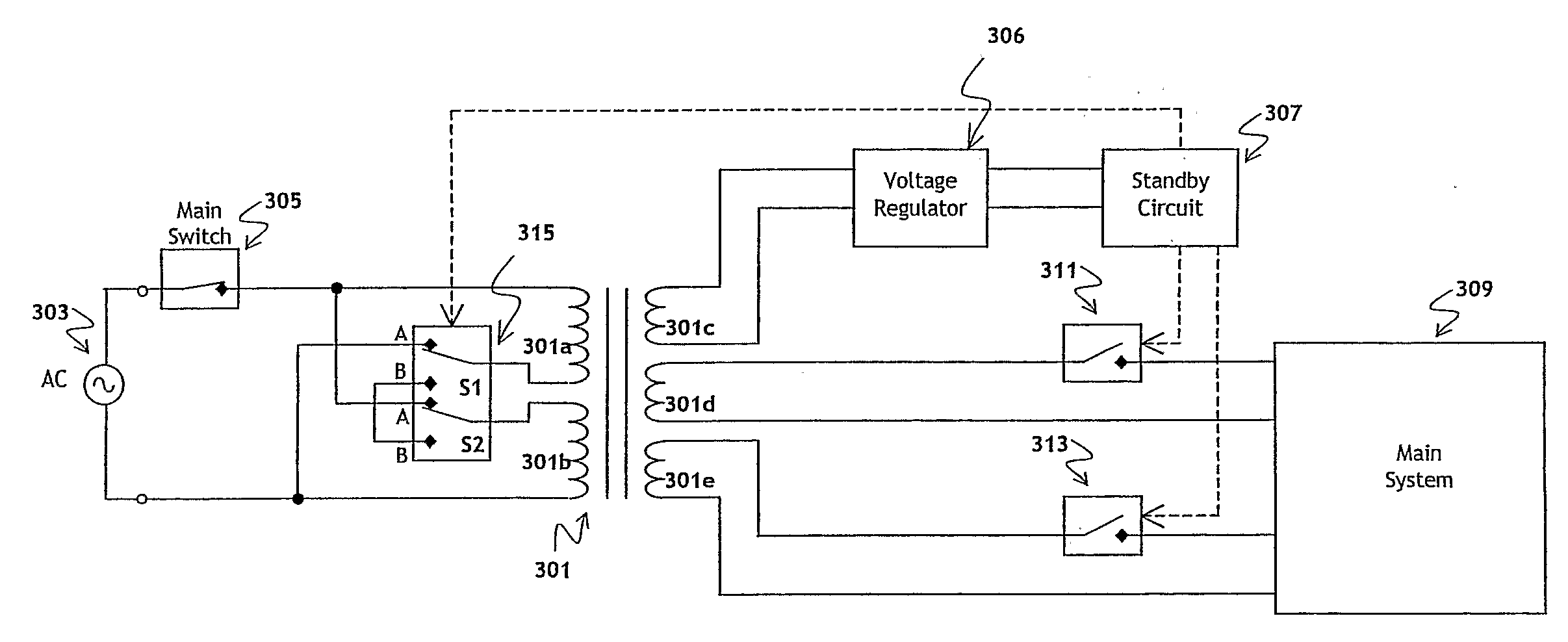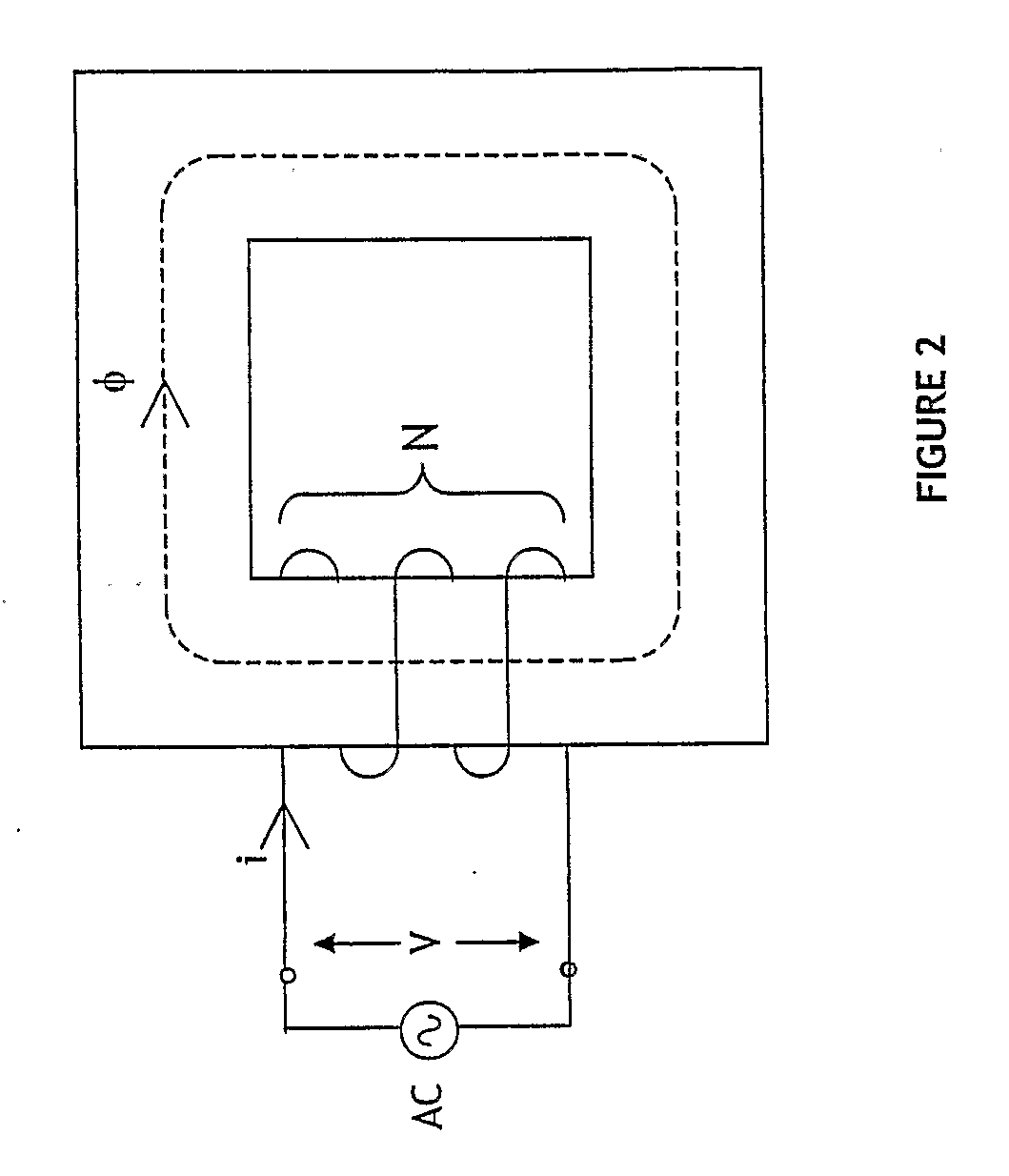Power Supply With Reduced Power Losses During Standby Mode
a power supply and standby mode technology, applied in emergency power supply arrangements, ignition automatic control, instruments, etc., can solve the problems of inefficient operation and most of the power loss, and achieve the effect of reducing power losses
- Summary
- Abstract
- Description
- Claims
- Application Information
AI Technical Summary
Benefits of technology
Problems solved by technology
Method used
Image
Examples
Embodiment Construction
[0076]FIG. 3 shows a transformer arrangement for a device according to a first embodiment of the invention. As in FIG. 1, transformer 301 comprises a primary side and a secondary side.
[0077]The secondary side of the transformer 301 is much the same as that of the conventional arrangement shown in FIG. 1. The transformer comprises secondary windings 301c, 301d and 301e. Secondary winding 301c provides the supply voltage to standby circuit 307, via voltage regulator 306, and secondary windings 301d and 301e provide the supply voltage to the main device 309 (i.e. the output load) via switches 311 and 313 respectively. The device may be put into standby mode by opening at least one of switches 311 and 313 so that the supply voltage is no longer supplied to or, in the case when only one switch is opened, adequate for the main device 309. It is most preferable that all switches connected to the main device 309 are open during standby mode so that the main device 309 does not draw any powe...
PUM
| Property | Measurement | Unit |
|---|---|---|
| AC voltage | aaaaa | aaaaa |
| output voltage | aaaaa | aaaaa |
| power | aaaaa | aaaaa |
Abstract
Description
Claims
Application Information
 Login to View More
Login to View More - R&D
- Intellectual Property
- Life Sciences
- Materials
- Tech Scout
- Unparalleled Data Quality
- Higher Quality Content
- 60% Fewer Hallucinations
Browse by: Latest US Patents, China's latest patents, Technical Efficacy Thesaurus, Application Domain, Technology Topic, Popular Technical Reports.
© 2025 PatSnap. All rights reserved.Legal|Privacy policy|Modern Slavery Act Transparency Statement|Sitemap|About US| Contact US: help@patsnap.com



